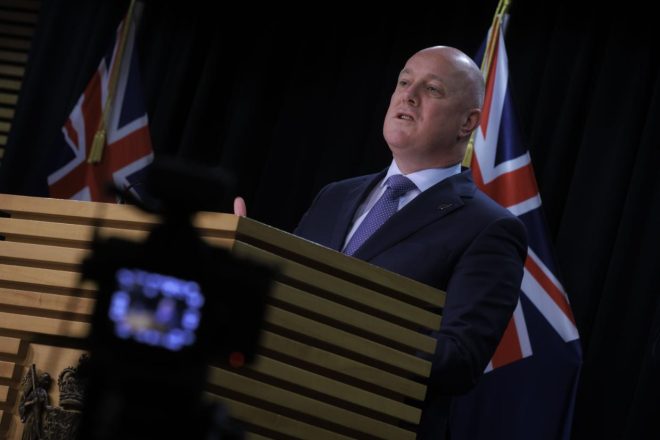Dự luật Nguyên tắc Hiệp ước đang tiến gần hơn đến Nghị viện. Nội các đã thảo luận về nó vào thứ Hai và có kế hoạch giới thiệu nó vào tháng 11. Dự luật này nhằm thay đổi các nguyên tắc của Te Tiriti o Waitangi, tập trung vào quyền sở hữu hơn là quyền bản địa. Nó được lãnh đạo bởi Phó Bộ trưởng Tư pháp David Seymour.
Thủ tướng Christopher Luxon đề cập rằng mặc dù Đảng Quốc gia sẽ không ủng hộ dự luật trở thành luật, họ sẽ đồng ý điều tra công khai về nội dung của dự luật. Trong các sự kiện trước đây trên khắp đất nước, Luxon đã phải đối mặt với những lời chỉ trích về dự luật. Ông đã cố gắng giải quyết vấn đề này bằng cách nói rằng National chỉ ủng hộ dự luật trong lần đọc đầu tiên.
Hôm thứ Hai, sau cuộc thảo luận nội các, Luxon xác nhận sẽ không có cuộc trưng cầu dân ý về các nguyên tắc của Hiệp ước. Ông nói: “Chúng tôi đang ủng hộ dự luật đọc đầu tiên. Nó sẽ được đưa ra vào nhà vào tháng 11,” nhắc lại sự ủng hộ hạn chế của National.
Sự phản đối dự luật ngày càng gia tăng. Hơn 400 nhà lãnh đạo Cơ đốc đã ký một lá thư yêu cầu Chính phủ từ bỏ nó. Họ cảnh báo rằng dự luật có thể gây hại cho Aotearoa New Zealand và nhấn mạnh rằng các nhà thờ có nghĩa vụ duy trì mana của Te Tiriti o Waitangi. Họ kêu gọi các nghị sĩ ngừng dự luật chuyển sang Ủy ban Chọn lọc.
Đảng Lao động Willie Jackson cũng chỉ trích dự luật, nói rằng dự luật không nên được đưa vào Quốc hội và kêu gọi các bộ trưởng Đảng Quốc gia phản đối nó. Tuy nhiên, Luxon tuyên bố rằng ông sẽ không dừng dự luật và ủng hộ việc cho phép nó được xem xét bởi một ủy ban quốc hội.
Luxon giải thích rằng Dự luật Nguyên tắc Hiệp ước là một vấn đề quan trọng trong các cuộc đàm phán liên minh, cần có thời gian để giải quyết. Seymour đề nghị các cuộc thảo luận nên đợi cho đến khi dự luật được đưa ra Nghị viện, tuyên bố nó sẽ xác nhận rằng “tất cả mọi người đều có quyền bình đẳng”.




























































